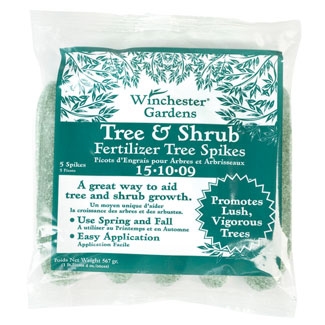Back in March I found
Gerry Joeng’s post in the “Garden
Industry Pro, Garden Media and Guru” LinkedIn Group, offering a free trial of
some of the
Winchester Gardens’ fertilizers and organics. While I am primarily an organic gardener, I thought I might give the products a try, so Gerry kindly sent me
some packages.
Although I did not take photos, I did use Winchester Gardens
Select Organics Herb Fertilizer on lemon verbena, heliotrope, patchouli and several varieties
of lavender planted in May, and they did very well.
On my Knockout Roses, I decided to use three Winchester Gardens
Tree & Shrub Fertilizer Spikes spaced equally around the root systems. Because I ran out of fertilizer spikes before I ran out of roses to try it on, the samples turned into a "non-scientific trial" with fertilizer and without.
My original Pink and Red Knockout Roses were planted dormant in January from 3-gallon pots, three to four months before I got the fertilizer to try. My "control group" that received no fertilizer were transplanted from another spot in my garden in March, and although they were approximately the same size, there was a lag of two months in regard to root establishment before hot weather arrived in May.
Delivery System: I used my
Dad’s gigantic, XL screwdriver to make holes for Tree and Shrub Fertilizer Spikes (April, 2012)
I pounded each fertilizer spike into the soil at roots of Knockout
Rose using a small sledgehammer; 3 per shrub. Roses were watered sporatically throughout the summer and fall.
At the end of the growing season, the Red Knockout Roses that were fed with three fertilizer spikes each are large and bushy shrubs filled with flowers. Photo taken Nov. 24, 2012 (Orange Zinnias to the right were killed by the frost that following night.)
With 5-foot ruler: Pink Knockout Rose bush fed with 3 fertilizer spikes is full and filled with flowers. Photo taken today, Dec. 7, 2012
With 5-foot ruler. Much smaller Pink Knockout Rose that was NOT fed (b/c I ran
out of fertilizer spikes). Photo taken today, Dec. 7, 2012. The unfertilized rose bush was growing and flowering but are only about 1/3 the size.
Another view of two of the smaller Pink Knockout Roses that did not receive fertilizer, photo taken today, Dec. 7, 2012.
Winchester Gardens is having a Sweepstakes, so I entered and maybe I will win some more fertilizer!



























